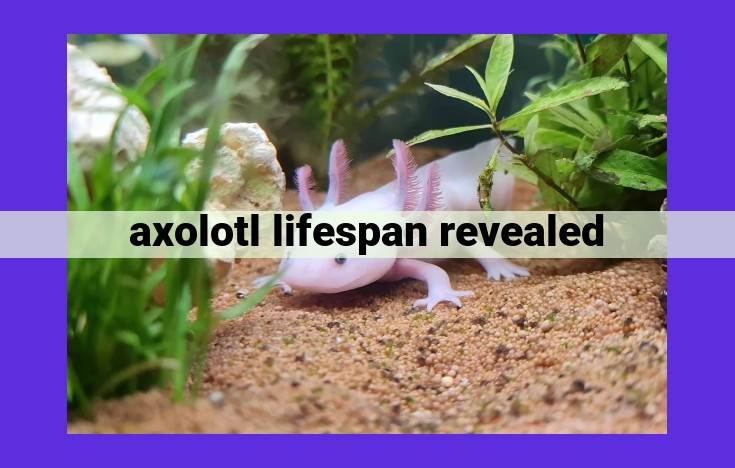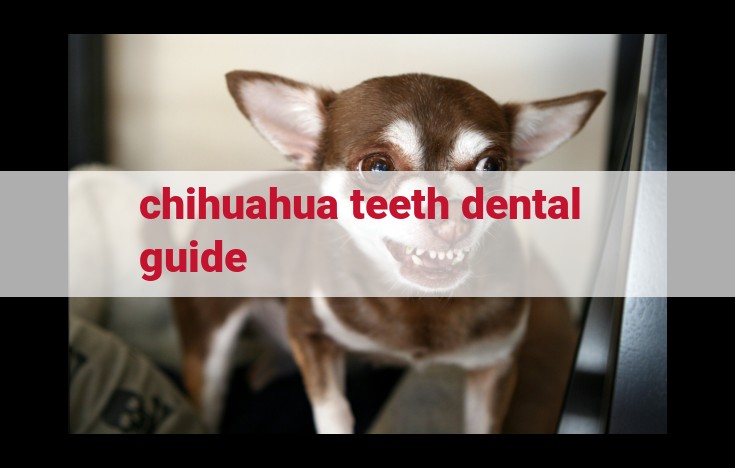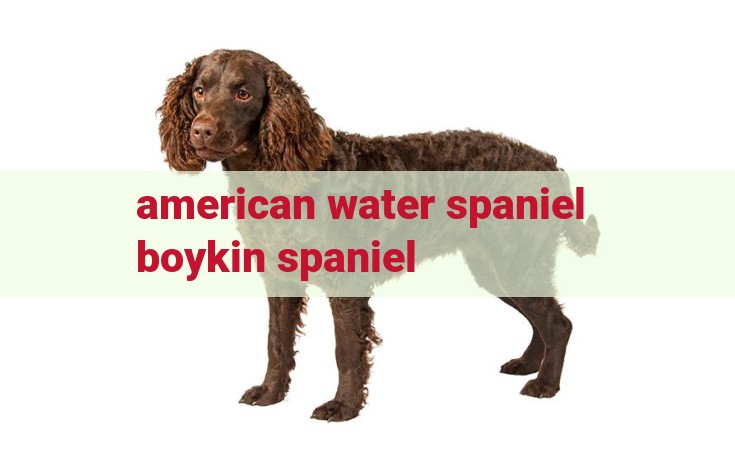Unlock the secrets of axolotl longevity! This blog delves into the intriguing lifespan of these unique amphibians, exploring factors such as neoteny, metamorphosis, genetics, and environmental influences. By comparing their lifespan in the wild to captivity, we uncover the impact of factors like water quality, diet, and stress. Join us as we unravel the mysteries of axolotl lifespan, highlighting conservation efforts to preserve these fascinating creatures for generations to come.
Unveiling the Enigmatic Lifespan of Axolotls: A Journey into Amphibian Longevity
In the realm of nature, where mysteries abound, dwells a peculiar creature—the axolotl, an extraordinary amphibian with a lifespan that has captivated scientists and nature enthusiasts alike. These captivating beings, reminiscent of miniature dragons, possess an intriguing ability to retain their juvenile characteristics throughout their lives, a phenomenon known as neoteny. In this blog post, we embark on a captivating journey to explore the factors that influence the mysterious lifespan of axolotls, uncovering the secrets behind their longevity and unraveling the tale of their transformation triggers.
A Tale of Two Environments: Lifespan in the Wild vs. Captivity
Axolotls inhabit vastly different environments, from the depths of crystalline lakes to the confines of captive habitats. In the wild, these remarkable creatures face numerous challenges that test their resilience, including predators, fluctuating temperatures, and environmental stressors. Consequently, their lifespan in the wild is comparatively shorter, often ranging from 5 to 10 years.
In contrast, axolotls under captive care typically live longer, with many individuals exceeding 15 years. This extended lifespan is primarily attributed to the absence of predators, stable environmental conditions, and access to a balanced diet. However, it’s essential to note that the stress of captivity can potentially reduce lifespan if not appropriately managed.
Unraveling the Factors that Shape Axolotl Lifespan
The lifespan of axolotls is a complex tapestry woven from an intricate interplay of biological, environmental, and genetic factors. These include:
-
Genetics: Genetic makeup plays a crucial role in determining the longevity of axolotls. Certain gene variants have been linked to increased lifespan, while others may confer susceptibility to diseases that can shorten their lives.
-
Water Quality: Axolotls thrive in clean, well-oxygenated water. Poor water quality, marked by high levels of ammonia or nitrite, can impair their health and potentially reduce lifespan.
-
Diet: A balanced diet is essential for the well-being of axolotls. A diet rich in live food, such as brine shrimp and bloodworms, provides the nutrients necessary for optimal growth and longevity.
-
Stress: Chronic stress, whether due to overcrowding, aggressive tank mates, or inadequate environmental conditions, can take a toll on axolotl health and lifespan.
-
Disease: Axolotls are susceptible to various diseases, some of which can be fatal. Regular veterinary checkups and preventive measures can help detect and manage diseases, thereby prolonging lifespan.
-
Regeneration Ability: Axolotls possess the remarkable ability to regenerate lost limbs and organs. This ability may contribute to their longevity by enabling them to recover from injuries that would prove fatal to other species.
Lifespan in the Wild vs. Captivity: A Tale of Two Environments
Axolotls, the enigmatic salamanders with a unique ability to regenerate limbs, are known for their extended lifespan. However, this lifespan can vary significantly depending on the environment in which they reside.
In the wild, axolotls are found in the pristine waters of Lake Xochimilco and Lake Chalco in Mexico. Here, they enjoy a natural and stable habitat that provides an abundance of food, shelter, and optimal water quality. As a result, axolotls in the wild typically live for 10-15 years.
In captivity, axolotls are often kept in aquariums or research facilities. While these environments can provide a safe and controlled habitat, they may lack the natural factors that contribute to axolotl longevity. Captive axolotls typically have a reduced lifespan of 5-8 years.
Environmental Factors Affecting Lifespan
Several key environmental factors influence the lifespan of axolotls in the wild and captivity.
Water Quality: Axolotls are sensitive to water quality, and poor water conditions can lead to stress, disease, and reduced lifespan. In the wild, Lake Xochimilco provides clean and well-oxygenated water, which contributes to axolotls’ longevity. In captivity, it is essential to maintain optimal water quality by regularly changing water and using a filtration system.
Diet: Axolotls are opportunistic predators, and their diet in the wild consists of a variety of small invertebrates and fish. In captivity, axolotls should be provided with a balanced diet that includes live or frozen food, such as worms, brine shrimp, and bloodworms.
Stress: Stress is a significant factor affecting axolotl lifespan. In the wild, axolotls may encounter natural stressors such as predators or habitat changes. In captivity, overcrowding, inadequate shelter, or handling can cause stress. Minimizing stress levels by providing appropriate housing and avoiding unnecessary handling can help extend axolotl lifespan.
Disease: Disease can be a major threat to axolotls, both in the wild and captivity. In the wild, axolotls are susceptible to bacterial, fungal, and parasitic infections. In captivity, poor water quality, overcrowding, and stress can increase the risk of disease. Proper hygiene, maintaining optimal water conditions, and regular veterinary checkups can help prevent disease outbreaks.
Unveiling the Factors that Shape Axolotl Lifespan
Axolotls, alluring amphibians with a captivating lifespan, have captivated the scientific community and animal enthusiasts alike. Delving into the realm of their enigmatic longevity, we’ll unravel the intricate tapestry of factors that influence their remarkable ability to endure time.
A Symphony of Genes and Environment:
Genetics, the blueprint of life, plays a pivotal role in axolotl lifespan. Some genetic predispositions can bestow extended lifespans, while others may shorten it. However, it’s not just nature that dictates their fate. Environmental factors, such as water quality and diet, can significantly influence their longevity. Clean, well-oxygenated water provides an optimal habitat for these aquatic creatures, while a nutritious diet rich in live prey ensures their overall health and well-being.
Stress: The Silent Assassin:
Stress, a formidable foe to all living beings, can accelerate the aging process in axolotls. Exposure to overcrowding, poor water conditions, or even excessive handling can trigger a cascade of physiological responses that ultimately take a toll on their longevity. Conversely, providing a serene and stress-free environment can prolong their lifespan.
Ailments and Limb Regeneration:
Diseases and infections can pose serious threats to axolotl health and lifespan. Maintaining pristine water quality and promptly addressing any health concerns are crucial for their well-being. Remarkably, axolotls possess an extraordinary ability to regenerate limbs, which may contribute to their longevity. By replacing damaged tissues, they can recover from injuries that would be fatal to other animals.
Decoding Neoteny: The Enigma of Perpetual Youth in Axolotls
Amidst the captivating tapestry of life, dwells a remarkable creature that defies the bounds of ordinary aging: the axolotl. This enigmatic amphibian showcases an extraordinary ability known as neoteny, a process that allows it to retain its juvenile characteristics throughout its entire life.
Neoteny’s Embrace: A Window into Axolotl’s Lifespan
Unlike its froggy counterparts, the axolotl embarks on a lifelong journey resembling a perpetual teenager. Its youthful features, including its feathery external gills, fin-like tail, and delicate physique, remain steadfast. While many animals endure a metamorphosis from larval to adult forms, axolotls proudly inhabit their juvenile guise, seemingly frozen in time.
Implications for Lifespan: A Balancing Act
This enigmatic phenomenon has profound implications for the axolotl’s lifespan. Neoteny provides a unique preservation of juvenile characteristics, potentially extending its longevity. However, the absence of metamorphosis may also limit its reproductive capabilities, as adult-specific organs remain dormant.
Conservation Conundrum: Neoteny and Preservation
The delicate dance between neoteny and metamorphosis presents a conservation conundrum. While neoteny contributes to the axolotl’s resilience, it may hinder its reproductive success and genetic diversity. Conservation efforts must carefully navigate this delicate balance, ensuring the preservation of both its unique traits and its ability to thrive in the wild.
Metamorphosis Unveiled: Exploring the Triggers Behind Axolotl Transformation
In the realm of amphibians, axolotls stand out as extraordinary creatures, capable of retaining their youthful features throughout their lives in a remarkable state of neoteny. However, under certain circumstances, these aquatic wonders may undergo a dramatic transformation into a terrestrial form.
The triggers for metamorphosis in axolotls are not fully understood, but scientists have identified several key factors that play a role. One of the most well-known triggers is iodine exposure. When axolotls are exposed to iodine, either through their environment or via injection, it initiates a cascade of hormonal changes that can lead to the initiation of metamorphosis.
Thyroid hormones are also known to influence metamorphosis in axolotls. These hormones are responsible for regulating growth and development, and their levels fluctuate in response to environmental cues and internal physiological signals. When thyroid hormone levels increase, metamorphosis can be initiated.
In addition to iodine and thyroid hormones, other environmental factors can also trigger metamorphosis in axolotls. These include changes in water temperature, diet, and the presence of certain chemicals or pollutants. While these factors can play a role, they are typically less potent than iodine exposure in triggering transformation.
The impact of metamorphosis on axolotl lifespan is a complex and ongoing area of research. Some studies have suggested that metamorphosed axolotls may have a shorter lifespan than their neotenic counterparts. This is thought to be due to the increased energy demands associated with terrestrial life and the potential loss of protective mechanisms against predators and disease.
However, it’s important to note that metamorphosis is _not always detrimental_ to axolotl survival. In some cases, it may be an adaptive response to environmental changes or a necessary step for reproduction. Understanding the triggers of metamorphosis and its implications for axolotl lifespan is crucial for conservation efforts and the well-being of these enigmatic creatures.
Conserving Axolotls: Preserving the Future
Axolotls, the enigmatic aquatic amphibians, have captured the hearts of scientists and nature enthusiasts alike. These creatures possess an extraordinary ability to retain their juvenile features throughout their lives, a phenomenon known as neoteny.
*However, the survival of axolotls hangs in the balance due to habitat loss, pollution, and the introduction of invasive species. *
Protecting Wild Habitats
Preserving the pristine environment where axolotls thrive is crucial for their survival. Conservationists are working tirelessly to protect and restore their natural habitats, such as Lake Xochimilco in Mexico City.
By restoring water quality, removing invasive species, and implementing sustainable land management practices, we can ensure that axolotls have a healthy home to call their own.
Captive Breeding Programs
Captive breeding programs provide a vital lifeline for axolotl conservation. These programs aim to maintain genetic diversity and ensure a backup population in case of catastrophic events in the wild.
By breeding axolotls in captivity, we also have the opportunity to study their biology and behavior, gaining insights that can inform conservation efforts.
Balancing Neoteny and Metamorphosis
Understanding the triggers for metamorphosis is key to balancing neoteny and metamorphosis for conservation purposes. By manipulating factors such as iodine exposure and hormonal changes, scientists can induce metamorphosis in captive axolotls, creating a larger pool of adults for breeding.
However, caution is necessary to avoid premature metamorphosis, which can compromise the overall health and longevity of the animals.
A Call to Action
Conserving axolotls requires a concerted effort from scientists, conservationists, and the public. By supporting research, habitat restoration, captive breeding programs, and sustainable practices, we can safeguard these unique creatures for future generations.
Join the movement to protect axolotls and ensure their enduring legacy as living symbols of the interconnectedness of our planet.




